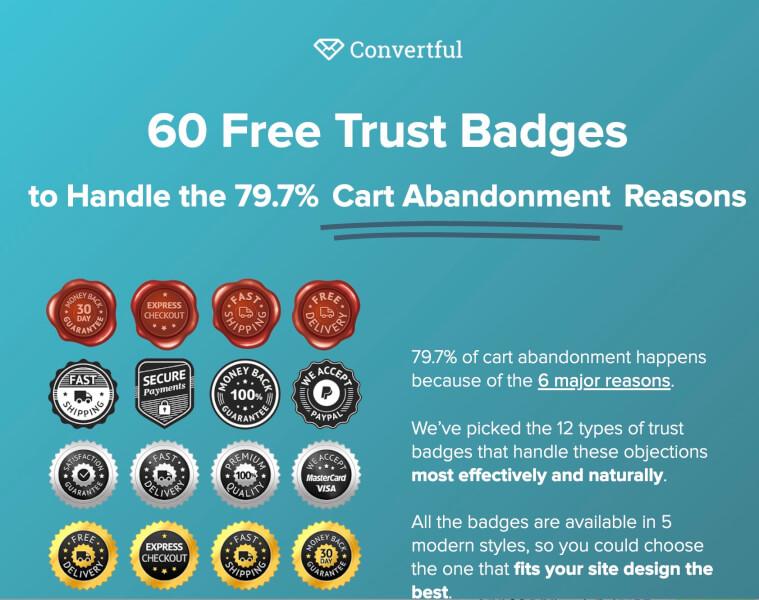How to Choose the Right Trust Badges & Were to Put Them
In today’s digital marketplace, credibility is everything. When shoppers land on your website,their trust can make or break a sale. That’s where trust badges come into play. These tiny yet powerful icons can reassure visitors that your site is secure, reliable, and worth their time and money. But with so many options out there,how do you choose the right trust badges for your brand? And more importantly,where should you place them for maximum impact?
in this article,we’ll guide you through the essentials of selecting trust badges that not only align with your values but also resonate with your audience. Plus, we’ll share strategic tips on placement that will help boost your conversion rates. So, whether you’re an e-commerce veteran or just starting out, get ready to enhance your website’s credibility and watch your sales soar! Let’s dive in and unlock the secrets to building trust with your customers.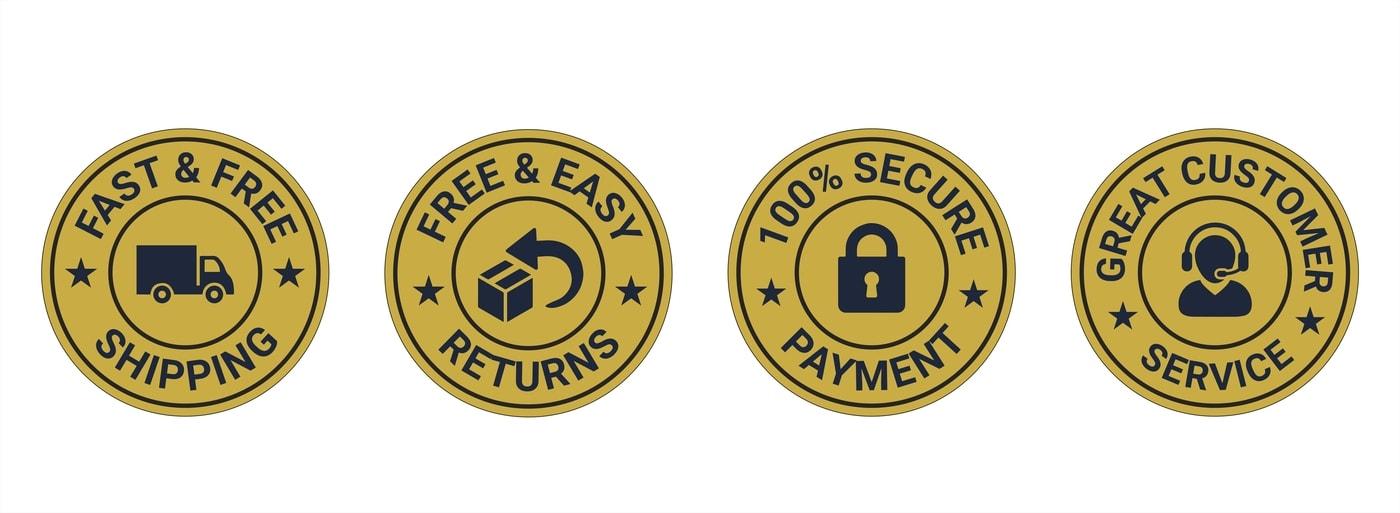
Understanding Trust Badges and Their Importance
In the digital marketplace, trust is paramount.With consumers becoming increasingly cautious about where they share their information and make purchases, trust badges serve as critical signals of safety and reliability. These visual indicators can include anything from security seals to satisfaction guarantees, and they help bridge the gap between skepticism and confidence in your brand.
Utilizing trust badges effectively can significantly impact your conversion rates. When potential customers perceive your site as secure,they’re more likely to complete a purchase. Consider implementing badges that resonate with your target audience. Here are some examples:
- SSL Certificate Badges: Indicate a secure connection.
- Money-Back Guarantee: Provides a sense of security in the purchase.
- Third-Party Endorsements: Assures customers of quality and trustworthiness.
Placement of these badges is just as crucial as their selection. A trust badge in the right spot can catch the eye and convince customers to proceed with their transactions. Here are some effective locations:
- Near the checkout button to reassure customers at the final decision point.
- On the product page to build confidence before adding items to the cart.
- In the footer or header for continuous visibility across the site.
To streamline your choices, consider the following table highlighting some popular trust badges and their key benefits:
| Trust Badge | Benefit |
|---|---|
| SSL Certificate | Protects user data with encryption. |
| Verified by PayPal | Instills payment security confidence. |
| Better Business Bureau (BBB) | Enhances business credibility. |
It’s essential to not overwhelm your visitors with too many badges. Instead, choose a few that align well with your brand values and audience expectations. The goal is to create an intuitive experience that builds trust without cluttering your site. By understanding the pivotal role that trust badges play, you can leverage them to foster a more secure and inviting shopping surroundings for your customers.

Identifying the Right trust Badges for Your business
Choosing the right trust badges for your business is crucial in establishing credibility and fostering customer confidence. Trust badges serve as visual cues that reassure potential buyers about their decision to shop with you. Though,not all badges are created equal,and the effectiveness of each can vary based on your industry,audience,and overall brand strategy. Here are some factors to consider when selecting trust badges:
- Relevance: Ensure that the badges you choose are relevant to your business type. As a notable example, an e-commerce site should prioritize payment security badges, while a SaaS company might focus on privacy and data protection certifications.
- Recognition: Opt for badges from well-known organizations. Familiar logos, such as those from Norton, McAfee, or the Better Business Bureau, can significantly enhance your site’s credibility.
- Trustworthiness: Choose badges that have a clear, verifiable purpose. Badges that signify security, customer satisfaction, or guarantees can be particularly effective in reducing buyer anxiety.
Once you’ve selected the badges that best fit your business,the next step is to determine where to place them on your website. The positioning of trust badges can influence user behavior and conversion rates significantly. Consider the following strategies:
- Above the Fold: Place essential trust badges in the header or top sections of your website, where they are immediately visible to visitors.
- Checkout Pages: Display security and payment badges prominently during the checkout process to reassure customers of their transaction’s safety.
- Product Pages: Include badges on individual product pages to highlight guarantees or returns policies, helping customers feel more secure in their purchases.
Here’s a simple comparison of some popular trust badges and their focus areas:
| Badge | Focus Area | ideal Use |
|---|---|---|
| Norton Secured | Website Security | E-commerce sites |
| money-Back Guarantee | customer Satisfaction | Product pages |
| SSL Secured | Data Protection | Checkout pages |
| Better Business Bureau | Business Trustworthiness | Homepage or About Us |
ultimately, the right trust badges can bridge the gap between skepticism and purchase decisions. Take the time to research various options and think strategically about placement to maximize their impact. By doing so, you’ll not only enhance your website’s credibility but also foster a more trustworthy shopping environment for your customers.
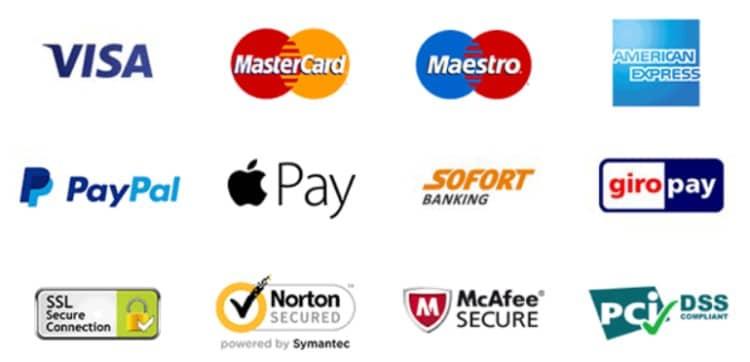
Evaluating Trust Badge Providers: What to Look For
When selecting a trust badge provider, it’s crucial to focus on several key factors that can enhance your credibility and build customer confidence. Not all trust badges are created equal, and understanding what makes a provider reliable can significantly impact your business.
Reputation and Recognition
Always start by evaluating the provider’s reputation in the industry. Look for badges from organizations that are widely recognized and respected. A badge from a reputable provider can lend instant credibility to your site. Consider the following:
- Years of operation and experience in the field
- Client testimonials and case studies
- Industry awards or recognitions
security Features
Security is paramount when it comes to customer trust. Choose a provider that offers comprehensive security measures,such as:
- SSL certification
- Data encryption technologies
- Regular security audits and updates
These features ensure that customer information is protected,wich can significantly enhance trust and conversion rates.
Customization Options
The ability to customize trust badges can help align them with your brand’s aesthetics. Look for providers that offer:
- Various badge designs and sizes
- Color options that match your site theme
- Placement flexibility to integrate seamlessly into your website
Customizable badges can enhance visual appeal and make it easier for customers to notice them.
Performance Metrics
Lastly, it’s beneficial to choose a provider that offers performance metrics. This allows you to track the effectiveness of your trust badges. Consider features such as:
- Click-through rates
- Conversion rate improvements
- A/B testing capabilities for different badge placements
Access to these metrics can provide valuable insights to optimize your strategy further.
By keeping these factors in mind,you can select a trust badge provider that not only enhances your credibility but also positively influences your customers’ purchasing decisions.
Strategically Placing Trust Badges on Your Website
When it comes to enhancing the credibility of your website, strategically positioned trust badges can make all the difference. These visually appealing icons serve as a powerful signal to your visitors that your site is secure and reputable. To maximize their effectiveness, it’s essential to consider both the type of badges you use and their placement on your pages.
Start by identifying the most relevant badges for your audience. Here are some common types:
- Security badges: Indicate that transactions are secure (e.g., SSL certificates).
- Payment Badges: Show accepted payment methods (e.g., Visa, PayPal).
- review Badges: Highlight ratings from established review platforms (e.g., Trustpilot).
- Refund Policy Badges: Assure customers with clear return policies.
Once you’ve selected the appropriate badges, consider where to place them for maximum visibility. Key locations include:
- Header Area: A prominent spot where users first look, ideal for security and payment badges.
- Product Pages: Near the call-to-action (CTA) buttons to reinforce trust before checkout.
- Footer Section: A good place for additional badges to reassure users as they read through your content.
- Checkout page: Essential for security and payment badges to alleviate any last-minute concerns.
To visualize the impact of badge placement, consider the following table showcasing various badge types and their ideal locations:
| Badge Type | Best Placement |
|---|---|
| Security Badge | Header, Checkout Page |
| Payment Badge | Header, Product Pages |
| Review Badge | Product Pages, checkout Page |
| refund Policy Badge | Footer, Product Pages |
Remember that the effectiveness of trust badges often depends on their design and context. Make sure they blend well with your website’s aesthetic while standing out enough to grab attention. Conduct A/B testing to gauge which placements yield the highest conversion rates, and adjust accordingly. With the right strategy in place, trust badges can significantly boost your site’s credibility and improve customer confidence.
The Impact of Trust Badges on Conversion Rates
When it comes to boosting conversion rates,trust badges play a pivotal role in establishing credibility and reassuring potential customers. By displaying these badges prominently on your site, you can significantly influence a visitor’s decision-making process. Research indicates that consumers are more likely to complete a purchase when they see recognized trust symbols, as they evoke a sense of security and reliability.
Here are some ways trust badges impact conversion rates:
- Increased Customer Confidence: Trust badges signal that your site is secure and that transactions are protected. This reassurance can alleviate any hesitation a potential buyer may have.
- Social Proof: Badges from reputable organizations or endorsements from industry leaders serve as social proof, suggesting that others have successfully engaged with your brand.
- Reduced Cart Abandonment: By displaying trust symbols at critical points in the checkout process, you can diminish fears related to online shopping, leading to fewer cart abandonments.
Incorporating trust badges effectively requires strategic placement on your website. Here’s where to put them for maximum impact:
- Checkout page: This is the most crucial stage in the customer journey. Position badges near the payment section to reassure users as they finalize their purchase.
- Product Pages: Displaying trust badges on individual product pages can help alleviate concerns about product quality and vendor reliability.
- Homepage: A prominent placement on the homepage establishes trust from the outset and sets a positive tone for the visitor’s experience.
To illustrate the effectiveness of trust badges, consider this comparison of conversion rates based on badge visibility:
| Badge Visibility | Conversion Rate (%) |
|---|---|
| Visible | 22% |
| Not Visible | 11% |
By incorporating well-chosen trust badges and placing them strategically, you not only enhance your site’s credibility but also create a seamless shopping experience that encourages conversions. The key is to ensure that the badges you select are relevant to your audience and clearly communicate the security and trustworthiness of your brand.
Testing and Measuring the Effectiveness of Your Trust Badges
Once you’ve strategically placed trust badges on your website, the next step is to evaluate their impact on user behavior. Testing and measuring the effectiveness of these badges can provide invaluable insights into how they influence customer trust and conversion rates. Here’s how you can go about it.
Start by implementing A/B testing to compare pages with and without trust badges. This method involves creating two versions of your webpage:
- Version A: The original page without any trust badges.
- Version B: The same page with the newly added trust badges.
Monitor metrics such as click-through rates, average time spent on page, and, most importantly, conversion rates. Tools like Google Analytics or dedicated A/B testing platforms can help you gather and analyze this data effectively.
Another crucial aspect to assess is user feedback. Consider using surveys or feedback forms to ask visitors directly about their perception of the trust badges. Questions can include:
- Did the trust badges make you feel more secure about your purchase?
- Which badge influenced your decision the most?
Incorporating user feedback can help you refine your approach and choose the most effective badges tailored to your audience’s preferences. Furthermore, keep an eye on key performance indicators (KPIs) over time to see if the badges continue to provide benefits or if they lose their effectiveness as trends evolve.
consider utilizing heatmaps to visualize where users are clicking on your site. This data can help you understand if trust badges are attracting attention and driving engagement. if you find that badges are consistently overlooked, it may be worth reassessing their placement or design to enhance visibility.
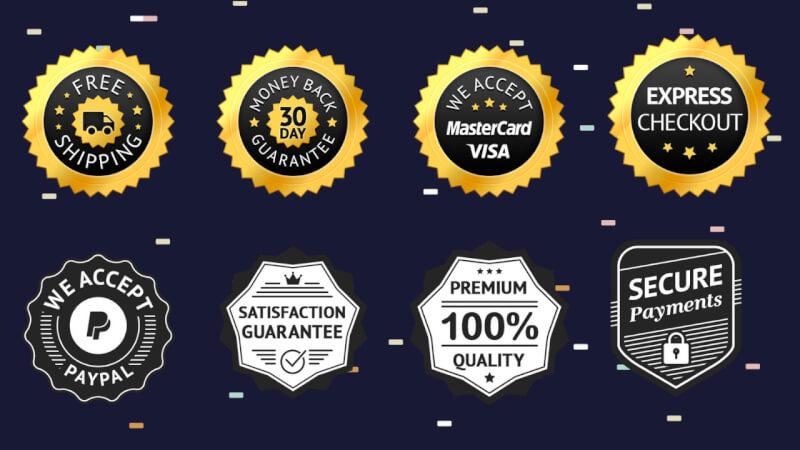
Maintaining Trust: Regular Updates and Best Practices
To foster a sense of security and reliability among your visitors, it’s essential to keep them informed with regular updates about your site and its security measures. Trust badges can significantly enhance your credibility, but they must be accompanied by ongoing interaction about their meaning. Here are some ways to maintain that trust:
- Consistent Updates: Regularly inform your users about any changes in your security protocols, privacy policies, or compliance standards. This clarity shows that you are actively working to protect their data.
- Engage Through Content: Create blog posts, newsletters, or social media updates that explain the importance of the trust badges you display. Help your audience understand how these measures benefit them.
- monitor Feedback: Encourage your users to provide feedback on their experiences. This not only helps you improve but also shows your audience that their opinions matter.
In addition to updates, adhering to best practices when using trust badges will significantly boost their effectiveness:
- Placement Matters: Strategically place your trust badges in high-traffic areas, such as the checkout page or product pages. This ensures that users see them at critical decision-making moments.
- Relevance is Key: Choose badges that align with your industry and audience. For example, an e-commerce site might prioritize payment security badges, while a service-based business might showcase customer service awards.
- Visual Appeal: Ensure that your badges are visually appealing. They should fit seamlessly into your website’s design while standing out enough to capture attention.
Here’s a simple table to help you understand which types of trust badges to consider for different business models:
| Business Type | Recommended Trust Badges |
|---|---|
| E-commerce | SSL Certification, payment Processing Security, Money Back Guarantee |
| Service-based | Customer Service Award, BBB Accredited, Secure Transactions |
| Subscription Services | Data Privacy Certification, Free Trial Guarantee, Secure Payment Badge |
By regularly updating your audience and implementing these best practices, you’ll not only display trust badges effectively but also cultivate a loyal customer base that feels secure and valued. Trust is not just about what you show; it’s about what you communicate and how you engage with your audience over time.
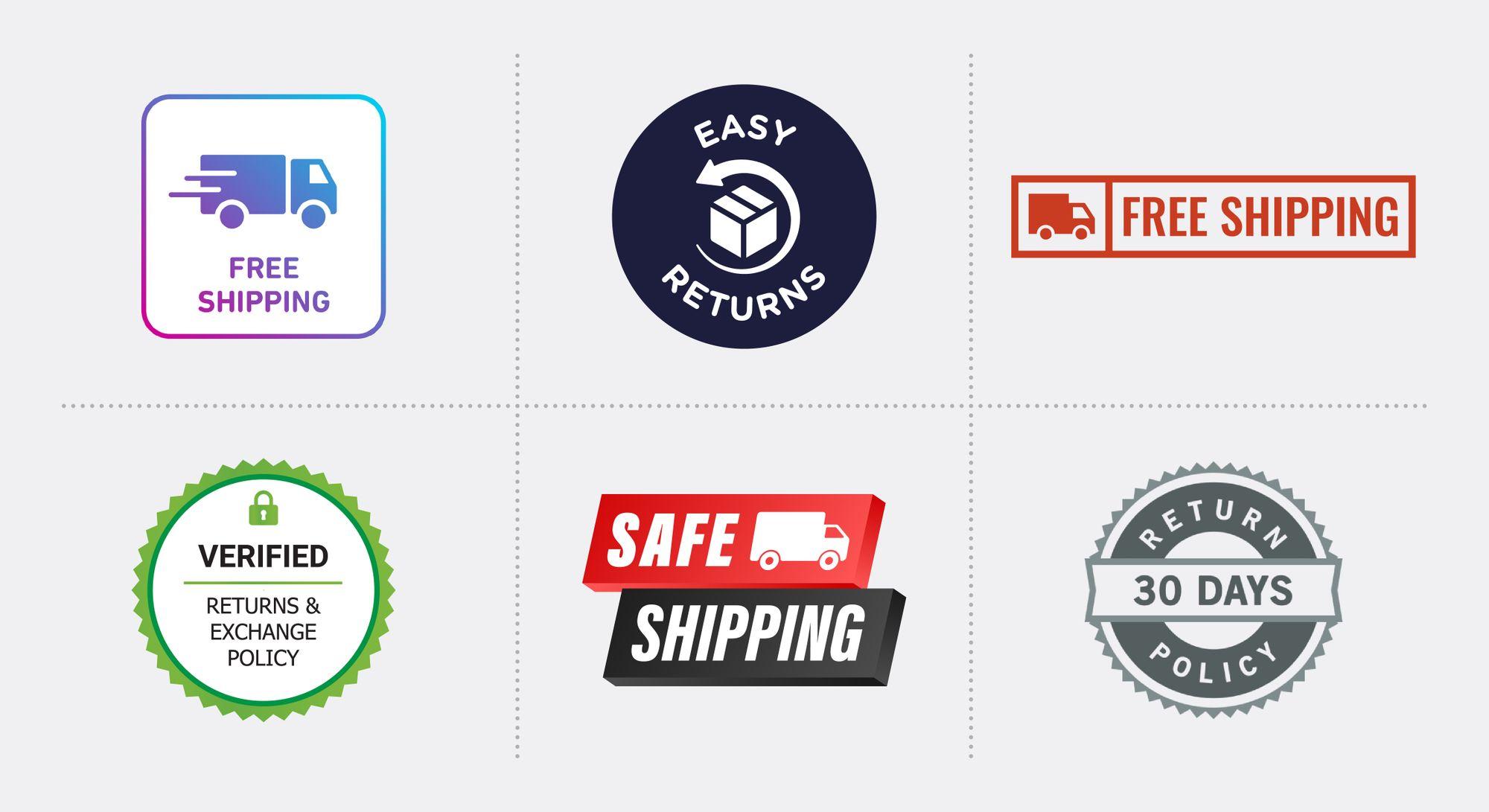
Combining Trust Badges with Other Trust Signals
Integrating trust badges with other trust signals can significantly amplify your site’s credibility and help build a stronger connection with your audience. While trust badges are an essential component, they are most effective when paired with additional signals that reinforce their message. Consider combining trust badges with elements such as:
- Customer Reviews: Showcasing authentic feedback from previous buyers alongside relevant trust badges can create a powerful narrative. Positive testimonials can serve as a compelling endorsement of your trustworthiness.
- Money-Back Guarantees: When a trust badge indicates security, coupling it with a clear money-back guarantee can alleviate customer anxieties about making a purchase.This strategy emphasizes your commitment to customer satisfaction.
- Secure Payment Icons: Displaying secure payment method icons next to trust badges reassures customers that their financial information is protected, enhancing their confidence in completing transactions.
Another effective approach is to strategically position these trust signals throughout your website.As an example, place trust badges prominently in the header and footer of your site, ensuring they are visible on every page. Additionally, consider embedding them on product pages and during the checkout process. This tactic keeps reassurance at the forefront, addressing any concerns your visitors may have at critical points in their journey.
Utilizing data visualization can also enhance the effectiveness of your trust signals.A simple table can compare your services with competitors, highlighting your unique strengths and the trust factors you offer. Here’s an example:
| Feature | Your Business | Competitor A | Competitor B |
|---|---|---|---|
| Money-Back Guarantee | 60 Days | 30 Days | No |
| Secure Payment Options | Yes | Yes | No |
| Customer Reviews | 4.9/5 | 4.5/5 | 4.0/5 |
Ultimately, the objective is to create a cohesive strategy where trust badges are supported by various elements that convey reliability and safety. the more layers of trust you can provide, the easier it will be for potential customers to feel secure in their decision to engage with your business.
Responding to Customer Feedback on Trust Badges
When your customers share their thoughts about trust badges, it’s an opportunity to strengthen your brand’s credibility and enhance the shopping experience. Listening to their feedback can illuminate what resonates with your audience and how you can better align your trust symbols with their expectations.
Engage with Your Customers: One of the most effective ways to respond to feedback is to actively engage with your customers. Consider these strategies:
- Acknowledge their Input: Let customers know you appreciate their feedback, whether it’s positive or negative.
- Ask for More details: If a customer has concerns about specific trust badges, invite them to elaborate. This can lead to insights that help you refine your badge selection.
- Share Updates: If you implement changes based on feedback,communicate these updates through newsletters or social media. This shows customers that their voices are heard.
Analyze Customer Sentiment: Not all feedback will be actionable, but analyzing common themes can help you make informed decisions. Use tools to track sentiment and categorize feedback into:
- Positive reactions: Customers feel reassured by specific badges.
- Neutral Responses: Indifference toward certain trust indicators.
- Negative Feedback: Concerns or distrust regarding specific badges.
Iterate Your Strategy: Based on the feedback analysis, consider updating your trust badges. You might find that customers respond better to specific icons or certifications. Test different placements on your website to see what garners the best response. As an example, you might want to consider:
| Placement | Effectiveness |
|---|---|
| Checkout Page | High – Reassures customers before final purchase. |
| Product Pages | Moderate – Builds trust while customers browse. |
| Homepage | Low – May not be impactful unless highlighted. |
don’t shy away from updating your badge selection based on evolving customer expectations. The digital landscape is dynamic, and so are consumer perceptions of trust. Regularly solicit feedback and stay proactive about making adjustments. This approach not only fosters trust but also builds a community of loyal customers who feel valued and heard.
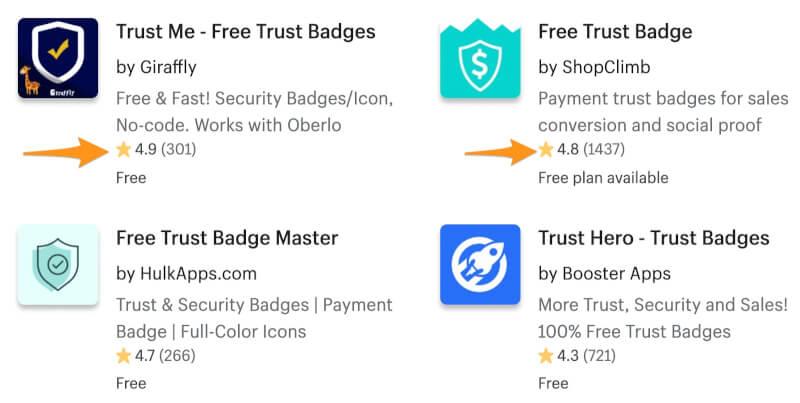
Maximizing Your Trust Badge Strategy for Long-Term Success
In today’s digital marketplace,trust badges serve as vital indicators of reliability and safety for consumers. To maximize their effectiveness, it’s essential to choose badges that resonate with your target audience and align with your brand values. Start by considering the types of badges that correspond to your industry. For e-commerce, you might prioritize payment security badges, while service-oriented businesses may benefit from customer satisfaction guarantees.
Not all trust badges are created equal. Focus on the ones that are widely recognized and respected by consumers. Here’s a quick rundown of the most impactful trust badges you should consider:
- SSL Certificate Badges – assure customers that their data is secure during transactions.
- BBB Accreditation – Instills confidence by showcasing commitment to resolving customer complaints.
- Money-Back Guarantee – Encourages purchases by reducing perceived risk.
- Secure Payment Options – Reassures users about the safety of payment methods.
Placement of trust badges can significantly impact their effectiveness. Here are some strategic locations to consider:
- Checkout Page – Place security badges prominently during the payment process to alleviate last-minute fears.
- Homepage – Feature key badges in the footer or header to enhance overall credibility right from the start.
- Product Pages – Use badges to assure customers about the quality and safety of specific items.
| Badge Type | Best Location | Impact on Trust |
|---|---|---|
| SSL Security | Checkout Page | High |
| Customer Satisfaction | Homepage | Medium |
| Money-Back Guarantee | Product Pages | High |
As you implement your trust badge strategy, remember to routinely analyze the performance of each badge. A/B testing can be a powerful tool here; by varying badge types and placements, you can gather data on what best enhances customer confidence and conversion rates. Ultimately, the right mix of badges and their strategic placement will contribute significantly to your long-term success.
frequently Asked Questions (FAQ)
Q&A: How to Choose The Right Trust Badges & Where to Put Them
Q: What exactly are trust badges, and why are they meaningful for my website?
A: Grate question! Trust badges are visual cues like logos or seals that signal to your visitors that your website is secure and trustworthy. They can include things like SSL certificates, payment security badges, and customer review seals. They’re super important because they help build credibility and reduce anxiety for potential customers, ultimately leading to higher conversion rates.
Q: how do I choose the right trust badges for my website?
A: Choosing the right badges starts with understanding your audience and what they value. Look for badges that represent security,payment protection,and customer satisfaction. As an example,if you run an e-commerce site,displaying payment processor logos (like PayPal or Visa) can reassure customers about their transaction security.Customer review badges from reputable sources like Trustpilot or Yelp can also enhance credibility.
Q: Are there any badges I should avoid?
A: Yes, definitely! Avoid using badges that look unprofessional or are not widely recognized.For instance, homemade badges or obscure certifications don’t instill confidence. Stick with well-known, respected badges that your audience will recognize and trust. Remember, the goal is to increase perceived trust, not confuse your visitors.
Q: Where should I place these trust badges on my website?
A: Placement is key! You’ll want to put your trust badges where they can be easily seen. Consider placing them on your homepage, product pages, and checkout pages.A good strategy is to put security badges near the payment area during checkout or customer review seals on product pages.This way, you’re reinforcing trust right when customers are making decisions.
Q: How many trust badges should I use?
A: Less is more! It’s tempting to load up on badges, but too many can overwhelm visitors and dilute their impact. Aim for 2-3 well-chosen badges that cover key areas of trust, like security and customer satisfaction. This keeps your site looking clean and professional while still sending the right message.
Q: Can the placement of trust badges affect my sales?
A: Absolutely! Strategic placement can significantly impact conversion rates.Badges placed above the fold or near critical decision points (like the “Add to Cart” button) can help alleviate concerns right when customers are most likely to hesitate. Testing different placements can also provide valuable insights on what works best for your audience.
Q: should I test different badges or placements?
A: Yes! A/B testing is a fantastic way to determine what resonates best with your audience. Try different badges, placements, and even different combinations to see which configuration leads to higher engagement and sales. Remember, what works for one business may not work for another, so it’s worth the effort to find your sweet spot.
Q: What’s the bottom line?
A: In a nutshell, the right trust badges can make a world of difference for your online business. They build credibility, ease customer concerns, and ultimately lead to more sales. By carefully selecting and strategically placing these badges, you’re not just enhancing your website’s professionalism—you’re also boosting your bottom line. so go ahead, invest in those trust badges, and watch your conversions soar!
Key Takeaways
selecting the right trust badges and strategically placing them on your website can make a world of difference in building credibility and encouraging conversions. Remember, it’s not just about slapping a few badges on your site; it’s about understanding what resonates with your audience and where they need that extra reassurance as they navigate their buying journey.
Take the time to research which badges align with your brand and audience. Don’t be afraid to experiment with placement—sometimes,the most effective positions are the ones you least expect! By doing so,you’ll not only enhance your site’s trustworthiness but also foster a stronger connection with your visitors.
So, go ahead, put these tips into action, and watch as your trust levels soar, leading to happier customers and increased sales. After all, in today’s digital landscape, trust is currency. Don’t miss out on the opportunity to earn it! Thanks for reading,and happy badge hunting!

